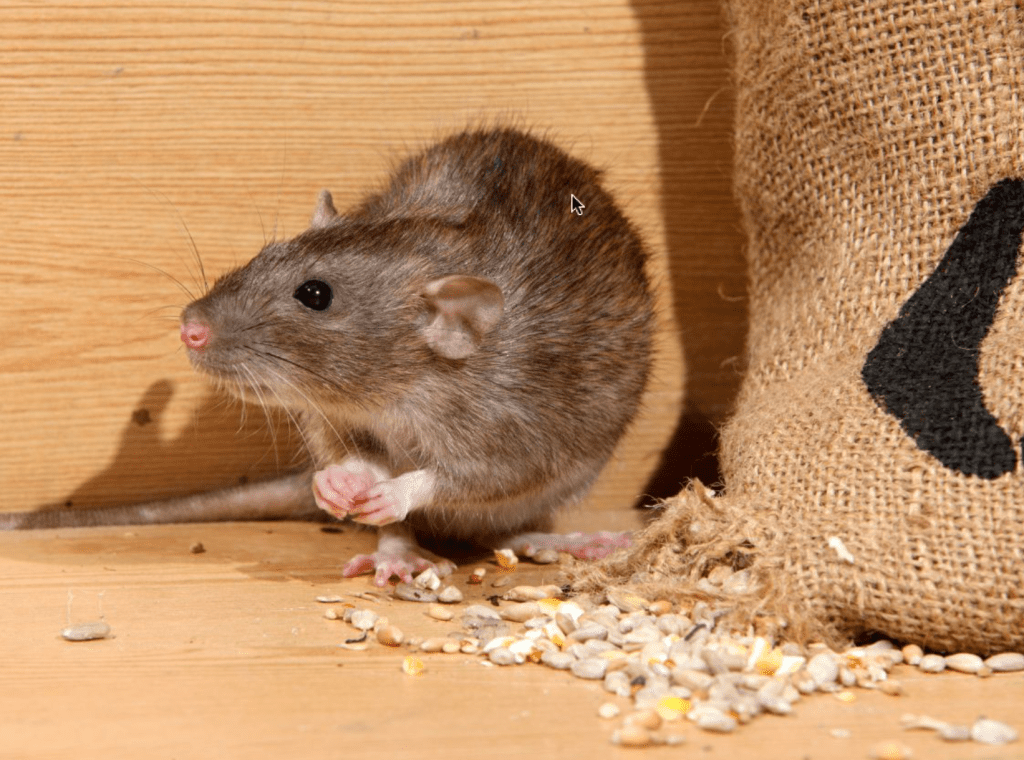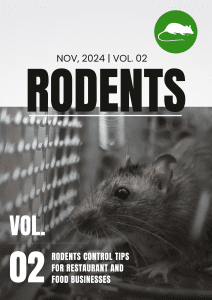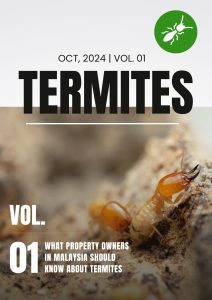Rodents have always been a challenge in Malaysia, but with urban expansion and easy access to food waste, they are now an increasingly common problem, especially for restaurants. For food businesses, rodent infestations aren’t just unsightly—they pose serious health risks, lead to potential fines, and can permanently damage a restaurant’s reputation if left unchecked.
In this blog, we’ll explore the common entry points for rodents in restaurants, practical tips to prevent infestations, and why working with licensed pest control company, like PestClean, can make all the difference.

Common Rodent Entry Points and Attraction Factors in Restaurants
Rodents are highly adaptable, and restaurants provide them with exactly what they need: food, shelter, and water. Here are some common entry points and attractors in restaurant environments:
- Structural Entry Points: Rodents enter through gaps in walls, doors that don’t close tightly, open windows, vents, and even small pipe openings. They can squeeze through surprisingly small spaces—just a few centimeters wide.
- Food Storage and Disposal: Even the smallest scraps of food left overnight or poorly managed waste can attract rodents. Overflowing trash bins, crumbs, and unsealed food containers are practically an invitation for them.
- Clutter and Hidden Areas: Rodents like dark, hidden places, making cluttered storage areas, unused corners, or piles of cardboard ideal spots for nesting. Regularly organized and clean spaces make your restaurant less inviting to them.
Effective Rodent Prevention Strategies for Food Businesses
Implementing some simple strategies can go a long way in keeping rodents out of your restaurant. Here’s how to get started:
- Regular Inspections: Schedule regular rodent inspections, ideally by licensed pest control professionals, who can spot early signs of rodent activity that might go unnoticed otherwise.
- Seal Entry Points: Inspect and seal gaps or cracks in walls, floors, and around doors and windows. Consider door sweeps and window screens to reduce entry opportunities.
- Waste Management: Ensure all trash bins have tight lids and are emptied regularly. Trash areas should be cleaned often to remove odors and food residue that attract rodents.
- Strict Cleanliness Practices: Make it a routine to sweep up crumbs, sanitize surfaces, and ensure that floors, counters, and storage areas are thoroughly cleaned each day. A clean environment is a powerful deterrent.
At PestClean, we take a proactive approach to pest control with Integrated Pest Management (IPM), which focuses on finding the root cause of pest issues and addressing them effectively. Here’s how IPM works and the steps your restaurant can take to keep rodents out.
Integrated Pest Management (IPM): Solving the Root Cause
Integrated Pest Management is a holistic approach to pest control. Instead of simply treating visible signs of rodent activity, IPM focuses on identifying and eliminating the underlying causes of infestations. By tackling entry points, food sources, and nesting areas, we make it much harder for rodents to thrive in the first place.
For instance, PestClean’s IPM strategy includes:
- Sealing Entry Points: We thoroughly inspect and seal any cracks, gaps, or openings that rodents could use to enter your restaurant. By eliminating entryways, we significantly reduce the chances of rodents getting in.
- Internal Treatments: Once entry points are sealed, we treat any active infestations within the building to eliminate existing rodents. This two-step approach ensures that the issue is addressed from the inside out.
- Using Tamper-Resistant Bait Stations (TRBS) for Safe Rodent Control: Pest control in a restaurant setting must be discreet and safe. Tamper-Resistant Bait Stations (TRBS) offer a secure way to control rodents without risking exposure to food or customers.
- Safety in Food Environments: TRBS are designed to keep bait contained and inaccessible to non-target animals and people, making them ideal for food businesses.
- Effective Placement and Monitoring: Installing TRBS near potential entry points and in high-activity areas maximizes their effectiveness. Regular checks ensure the stations remain functional and baited.
- Ongoing Maintenance: To keep rodent populations controlled, TRBS require periodic maintenance. Monthly or quarterly inspections can keep them effective and identify any new risks early.
Benefits of Professional Rodent Control for Restaurants
While basic preventive steps are essential, the best way to ensure complete rodent control is to work with licensed pest control company like PestClean. Here’s why:
- Expertise and Safety: Our team at PestClean understands the most effective treatments and knows how to apply them safely in food-handling environments.
- Customized Solutions: Every restaurant is unique, and a one-size-fits-all solution rarely works for rodent control. We assess your restaurant’s needs and craft a tailored approach, from bait station placement to follow-up inspections.
Conclusion: Keeping Malaysia’s Restaurants Safe and Clean
In Malaysia’s food industry, active rodent control is essential for public health, regulatory compliance, and maintaining a strong reputation. By implementing effective rodent prevention strategies and partnering with professionals like PestClean, you can keep your restaurant environment in Sibu, Miri, or Bintulu safe, hygienic, and rodent-free. Contact us today to learn more about how PestClean’s licensed rodent control services can protect your business and ensure a pest-free environment.






